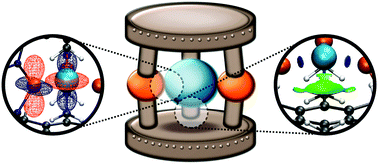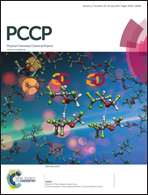Metal containing cryptands as hosts for anions: evaluation of Cu(i)⋯X and π⋯X interactions in halide–tricopper(i) complexes through relativistic DFT calculations†
Abstract
More selective than crown ethers, cryptands arise as suitable hosts for several ions, with the size of the cavity and the behavior of the atoms belonging to the structure being the main factors governing their selectivity. Similar to metallacrowns, inorganic counterparts of crown ethers, the presence of metal centers in cryptands can offer significant advantages in terms of ion recognition as they provide positively charged sites, which allow them to encapsulate anions. Here, through density functional methodologies, we evaluate the preference of a tricopper(I) cryptand host toward a series of halide ions ranging from the hard fluoride to the soft iodide, where the more intense interactions are established with the hardest one, and the electrostatic term is the more relevant contributor to total interaction energy. Upon exploration of this electrostatic contribution in more detail, it is observed that as the guest becomes softer, the increase of higher order Coulombic terms, such as dipole–dipole, dipole–quadrupole, and quadrupole–quadrupole, acquires more relevance on going from 9.22% to 41.25%, denoting the key role and variation of such forces in inclusion systems with metal-containing hosts.


 Please wait while we load your content...
Please wait while we load your content...